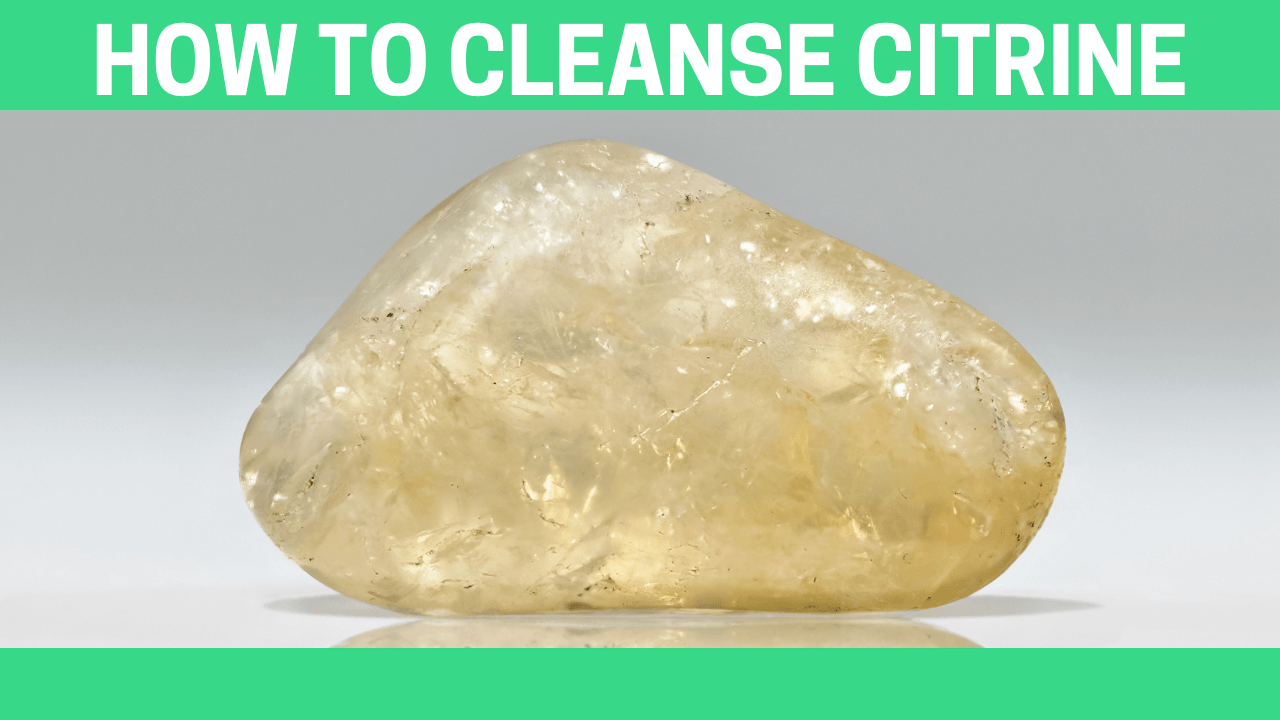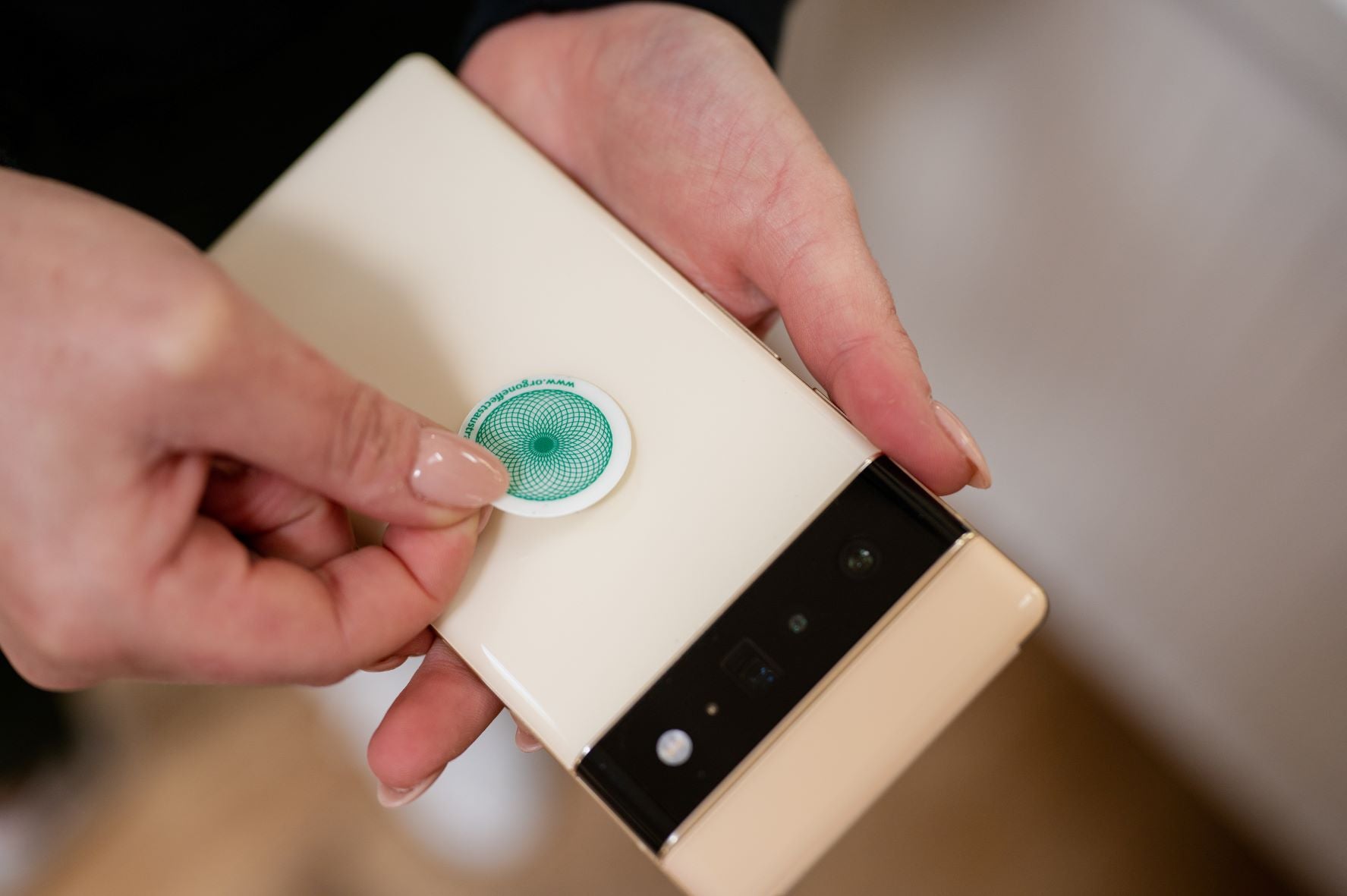Citrine is known for its amazing ability to attract good fortune and deflect negative energy, but is citrine toxic?
In the world of crystal healing and alternative therapies, the use of gemstones and crystals has garnered immense popularity for their purported metaphysical properties.
From Cinnabar to Malachite, these dazzling stones have captured our fascination, but behind their beauty lies a hidden danger – toxicity. Red crystals like Cinnabar and red jasper, composed of mercury sulfide, are notorious for their potential harm, while Malachite’s copper content can also be hazardous if ingested in large quantities.
Amidst this cautionary tale, there is a ray of hope in the form of Citrine, a radiant crystal that shines not only with its golden hue but with a clean bill of health.
Unlike its toxic counterparts, Citrine is considered 100% safe for handling, touching, and using in everyday life.
Its non-toxic nature has placed it firmly on the list of crystals that can be utilized freely to achieve maximum benefits with no health concerns.
Let's dive into all aspects of this intriguing stone—from its origin story to why some experts believe it has the power to heal. Along the way, we’ll also explore whether or not Citrine is actually toxic, and how to care for it so that everyone in your household stays safe. So if you're ready to learn more about one of Mother Nature's greatest wonders, read on!
Understanding Toxic Crystals

In the captivating world of gemstones and crystals, it’s essential to be aware of certain crystals that can harbor potential hazards due to their toxic composition. Let’s explore two notorious examples and understand the reasons behind their toxicity.
Cinnabar, Red Jasper, and Carnelian: Mercury Sulfide and its Dangers
Red crystals like Cinnabar and red jasper have an eye-catching allure, but their beauty masks a hidden danger – they are composed of mercury sulfide.
This mineral compound, also known as cinnabarite, contains mercury, a toxic element infamous for its harmful effects on human health. The soft and flaky nature of these crystals allows mercury particles to disperse easily, making them a risky choice for direct contact or use in healing practices.
Mercury exposure, whether through ingestion, inhalation, or skin contact, can lead to severe health complications, impacting the nervous system, kidneys, and respiratory system.
As such, these red crystals should be handled with extreme caution, and prolonged exposure or direct contact should be avoided altogether.
Malachite’s Copper Content and its Potential Toxicity if Ingested

Malachite, with its mesmerizing green swirls, is another enchanting crystal with a potentially harmful secret – its high copper content. Copper, in its natural form, is an essential trace element vital for various bodily functions. However, when ingested in large quantities, it can become toxic.
If Malachite is used for elixirs or water infusions, the copper present in the crystal may leach into the liquid, leading to copper poisoning if consumed regularly or in significant amounts.
Symptoms of copper toxicity may include nausea, vomiting, abdominal pain, and even liver damage.
Is Citrine Toxic?
So, is Citrine toxic? Unlike its toxic counterparts, Citrine is a crystal free from harmful compounds and elements, making it completely safe to handle, touch, and incorporate into daily life.
As a non-toxic crystal, Citrine offers a world of benefits with no health concerns, allowing you to fully explore its positive energies and healing properties without reservation.
With its radiant golden hues, Citrine has captured the hearts of crystal enthusiasts and spiritual seekers alike.
Beyond its aesthetic appeal, Citrine boasts a unique set of properties that set it apart from other crystals – most notably, its status as a completely safe and non-toxic gemstone.
Composition and Geological Background of Citrine
To truly understand Citrine’s safety, let’s delve into its composition and geological origins. Citrine is a variety of quartz, a mineral composed of silicon and oxygen.
Unlike the red crystals containing mercury Sulfide or the copper found in Malachite, Citrine’s structure is devoid of these harmful elements.
Instead, it acquires its stunning golden color from trace amounts of iron impurities, which infuse the crystal with a warm and vibrant glow.
Scientific Analysis of Citrine’s Components

Citrine’s chemical formula (SiO2) reveals its pure and untainted nature. It lacks any traces of mercury Sulfide or copper, ensuring its non-toxic status. This absence of harmful compounds makes Citrine a crystal that can be handled and used without concern for potential health risks.Through extensive scientific analysis, researchers have confirmed that Citrine’s golden hue results from the presence of iron as an impurity in its crystal lattice.
These iron impurities are entirely safe for human interaction, further emphasizing Citrine’s remarkable safety profile.
Citrine holds a prominent place within the crystal healing community due to its reputation as a crystal of abundance, joy, and positive energy. It is often associated with the solar plexus chakra, fostering confidence and empowering its users to achieve their goals.
Its wide range of metaphysical properties makes Citrine a sought-after gemstone for various healing practices and spiritual rituals.
As with any popular gemstone, ensuring the authenticity and safety of Citrine is of utmost importance. Reputable gemologists and crystal dealers employ rigorous testing and certification processes to verify the legitimacy of Citrine and its origins.
By obtaining Citrine from verified and ethical sources, crystal enthusiasts can be confident in the crystal’s non-toxic nature and its ability to bring forth positive energies and healing benefits.
Citrine’s Benefits and Uses
Citrine, the golden gem of positivity and abundance, is renowned for its remarkable healing properties and metaphysical attributes. Its vibrant energy radiates positivity, uplifting spirits, and fosters a sense of well-being. Understanding the various aspects of Citrine’s power allows us to harness its potential for holistic healing and personal growth.
At the core of Citrine’s beauty lies its ability to infuse its surroundings with positive vibrations.
As an energizing crystal, Citrine stimulates the solar plexus chakra, empowering individuals with enhanced self-confidence, motivation, and a renewed zest for life.
Its uplifting energy can dispel negativity, replacing it with a warm and joyful ambiance that helps ease stress and anxiety.In alternative therapies, Citrine is often utilized to clear energy blockages and promote emotional clarity.
Its cleansing properties are believed to rejuvenate the mind, body, and spirit, facilitating personal growth and encouraging a more balanced perspective on life.
Additionally, Citrine is cherished for its role in attracting prosperity, abundance, and success, making it a popular choice for manifestation practices.
The power of Citrine goes beyond its metaphysical reputation – it is also celebrated for its safety and non-toxic nature. Countless users have shared their experiences and testimonials, highlighting Citrine’s effectiveness as a crystal that can be embraced without concern for harmful side effects. These personal stories are a testament to the crystal’s authenticity and its ability to bring about positive transformation in the lives of its users.
Citrine in Jewelry and Home Decor
One of the many appeals of Citrine lies in its versatility, making it a popular choice for both jewelry and home decor. Adorned as necklaces, bracelets, rings, and beads, Citrine not only enhances one’s style but also serves as a constant source of positive energy throughout the day.
Its warm and inviting hue also makes it an excellent addition to home decor, infusing living spaces with a sense of serenity and prosperity.
Whether worn close to the body or placed strategically around the home, Citrine’s gentle energy brings forth a harmonious ambiance that nourishes the soul and uplifts the spirit.
Its presence acts as a gentle reminder of the potential for growth, abundance, and well-being that lies within each individual.
Debunking Misconceptions and Myths

Despite Citrine’s well-established reputation as a safe and non-toxic crystal, various misconceptions have emerged over time, clouding the crystal’s pristine image. By delving into the origins of these misconceptions, we can shed light on the truth behind Citrine’s safety.
Historical Context and Cultural Beliefs
Throughout history, some cultures associated certain crystals with specific beliefs and superstitions, leading to misconceptions about their safety. Citrine’s bright color and similarity to other yellow or orange stones may have contributed to its association with crystals like Cinnabar and red jasper, which contain toxic elements. Over time, these associations may have perpetuated the myth of Citrine being potentially harmful.
Misidentification and Confusion with Other Crystals
In the world of gemstones, misidentification can occur, especially with crystals that share similar colors or appearances. Citrine’s natural golden hue can be reminiscent of heat-treated Amethyst or other yellow stones, leading to confusion about its authenticity and safety. These misidentifications may have fueled doubts about the true nature of Citrine.
How to Identify Genuine Citrine
To ensure authenticity and safety, it is crucial to recognize genuine Citrine from synthetic or treated imitations. Natural Citrine, formed through geological processes, has unique characteristics that set it apart from other crystals.
Genuine Citrine typically exhibits a range of warm golden to pale yellow shades, while synthetic or heat-treated varieties may have unnaturally vibrant colors or lack the subtle variations of natural Citrine. Familiarizing yourself with these distinctions can help you to confidently identify and embrace genuine Citrine.
When purchasing Citrine or any crystal, it is essential to purchase from reputable and trustworthy sources. Verified gemstone dealers and certified crystal suppliers are dedicated to providing genuine, non-toxic crystals.
Seek out sellers who offer information on the crystal’s origin, geological formation, and certifications, assuring you of the crystal’s authenticity.
Best Practices for Handling and Using Citrine

Safe Handling and Precautions for Any Crystal
Before diving into the specifics of Citrine, it is essential to establish general guidelines for the safe handling and usage of crystals. Following these practices ensures a positive and secure crystal experience for all enthusiasts.
General Guidelines for Crystal Users
Wash Hands: Prior to handling any crystal, wash your hands thoroughly to remove any dirt, oils, or contaminants that could affect the crystal’s energy or your health.
Storage: Store your crystals in a safe and secure location away from direct sunlight, extreme temperatures, and moisture, preventing damage and preserving their energetic qualities.
Intention Setting: Before using a crystal, set a clear intention or purpose for its use, as this amplifies its effectiveness and promotes a stronger connection between you and the crystal.
Cleansing: Regularly cleanse your crystals to remove any negative energies they may have absorbed, ensuring their optimal performance.
Respect and Gratitude: Treat your crystals with respect and gratitude for their assistance, recognizing them as powerful tools for personal growth and healing.
Specific Handling Considerations for Citrine
Fortunately, Citrine’s non-toxic nature allows for safe and worry-free handling. However, it is still essential to adhere to the general guidelines mentioned above to maintain the crystal’s energetic purity and longevity.
Responsible Disposal and Ethical Considerations
When the time comes to part with a crystal, responsible disposal is crucial to respect nature and maintain ethical practices. Rather than discarding crystals in the regular trash, consider the following environmentally friendly options:
- Re-homing: If you no longer require the crystal, consider gifting it to someone who may benefit from its energies.
- Burial: Burying the crystal in the earth allows it to return to nature, completing its cycle gracefully.
- Natural Bodies of Water: Gently placing the crystal in a natural body of water can signify a symbolic return to its source.
Conclusion
From its origin story, to its potential healing powers, Citrine certainly is an intriguing gemstone. While there’s been no scientific evidence to prove that it is toxic, some might still want to practice caution when dealing with this type of gemstone.
At the same time, proper care and attention should be given when handling them in order to ensure everyone's safety.
For those who seek the beauty and power of citrine as a jewelry piece or for decoration, we have got you covered. With a variety of products available such as bracelets, necklaces, rings, spheres, towers, crystals, and stones – Citrine offers the perfect solution for anyone looking to adorn themselves with this precious stone. So why not buy your own piece today and add a special glimmer of natural beauty to your life!










